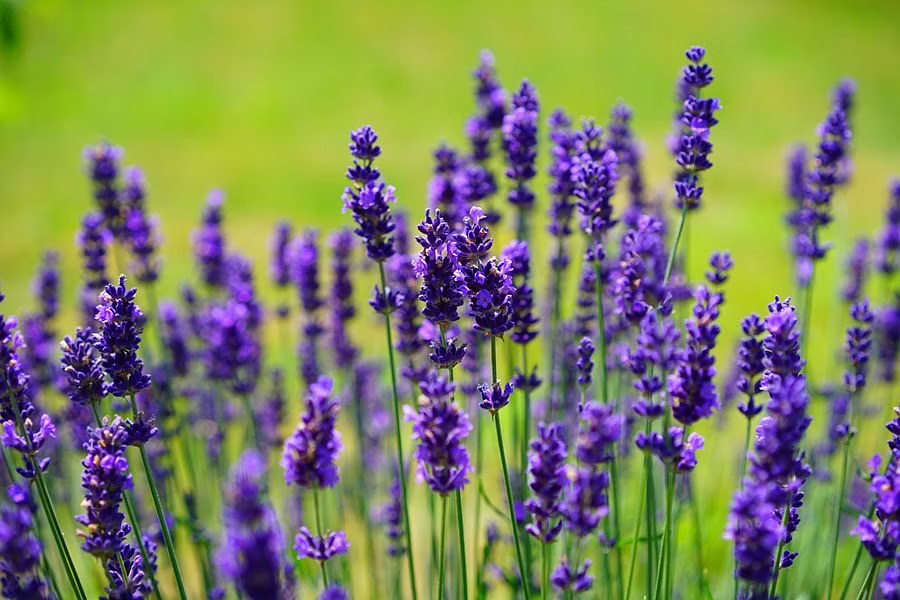Bivek Mathur
Jammu, Jan 4: Over 5000 kanals of agricultural land has been brought under lavender cultivation thus far in the Union Territory of Jammu and Kashmir, a CSIR-IIIM Jammu plant scientist said.
According to him, the premier institute has also set a target of increasing the cultivation figures by 10 times in the current year i.e. 2023 so that the UT’s farmers could increase their income multiple times by shifting to the profitable crop from the traditionally grown crops like maize and pulses in the hilly areas.
Under Mission Aroma, which was formerly known as J&K Aroma Arogya Gram (JAG) Project, Sumit Gairola, Principal Scientist, Plant Sciences and Agro Technology Division, CSIR-IIIM Jammu, said that since launching of Mission Aroma in 2007 in Jammu and Kashmir, their institute has so far distributed a record 30 lakh lavender plants among the 1500 farmers of the Union Territory.
“Over 15 lakh plants have been distributed among the farmers only in 2022 and we’ve further got a demand of more saplings from 4000 additional farmers,” Gairola said.
Pertinently, the aromatic crop and its by-products particularly oil, perfumes and soaps are by-and-large imported in India from Europe. The crop was first introduced in Kashmir in 1941 on a trial basis and then in Jammu’s Bhaderwah in the year 2010 where lavender farming turned out to be a huge success.
In the preceding year i.e. 2022, J&K farmers earned in crores from the sale of lavender plants, dried flowers and lavender oil as well as its products to the neighbouring States of Uttarakhand, Himachal Pradesh and the north-Eastern states.
In Doda’s Bhaderwah, Sumit Gairola, the Principal Scientist, Plant Sciences and Agro Technology Division, CSIR-IIIM Jammu, said that some 50 progressive farmers including 30 women farmers have set up a joint nursery from where they sold 10 tonnes of dry flower worth Rs. 50 lakh in the last year. The flowers, according to him, were sold to buyers from across the state through CSIR-IIIM Jammu.
The farmers, he said, also sold 25 lakh lavender plants worth Rs 1.5 crores in the last year. “The Doda farmers also sold 1600 Kgs of lavender oil worth Rs 1.5 crores in the year 2022,” said the top scientist.
The oil crop that is sown between October and February starts bearing flowers between ending May and beginning June. The lavender plant bears flowers second time in October, thus two crops in a year. While one kilogram of dried lavender flowers are sold at the rate of Rs 1500 the flower oil fetches between Rs 8000-1000 per kilogram.
The CSIR-IIIM Jammu staffs provide the basic training to the farmers willing to start lavender cultivation in hilly areas as the crop grows only in cold regions of the UT. The crop saplings are also provided free-of-cost to the farmers. After crop maturity, farmers can either sell the dried flowers directly to the customers or the lavender oil and its by-products. For oil distillation, CSIR-IIIM Jammu provides the machinery free-of-cost to farmer clusters. So far, 50 oil distillation machines have been provided to the farmers across the UT, highest in Kathua, Udhampur and Reasi Districts.
From one kanal of the land, a lavender farmer can earn up to Rs 15000-20000 against earning of Rs 2000-3000 from the sale of traditional crops like maize and pulses. The CSIR-IIIM also helps farmers in marketing of their crop and its by-products through departmental stalls and sale to private players from across the country.
The oil crop requires no land tilling and cultivation for years together unlike the traditional crops and it is also not harmed by the monkeys like they do in cases of the traditional cereal and fruit as well as vegetable crops.


